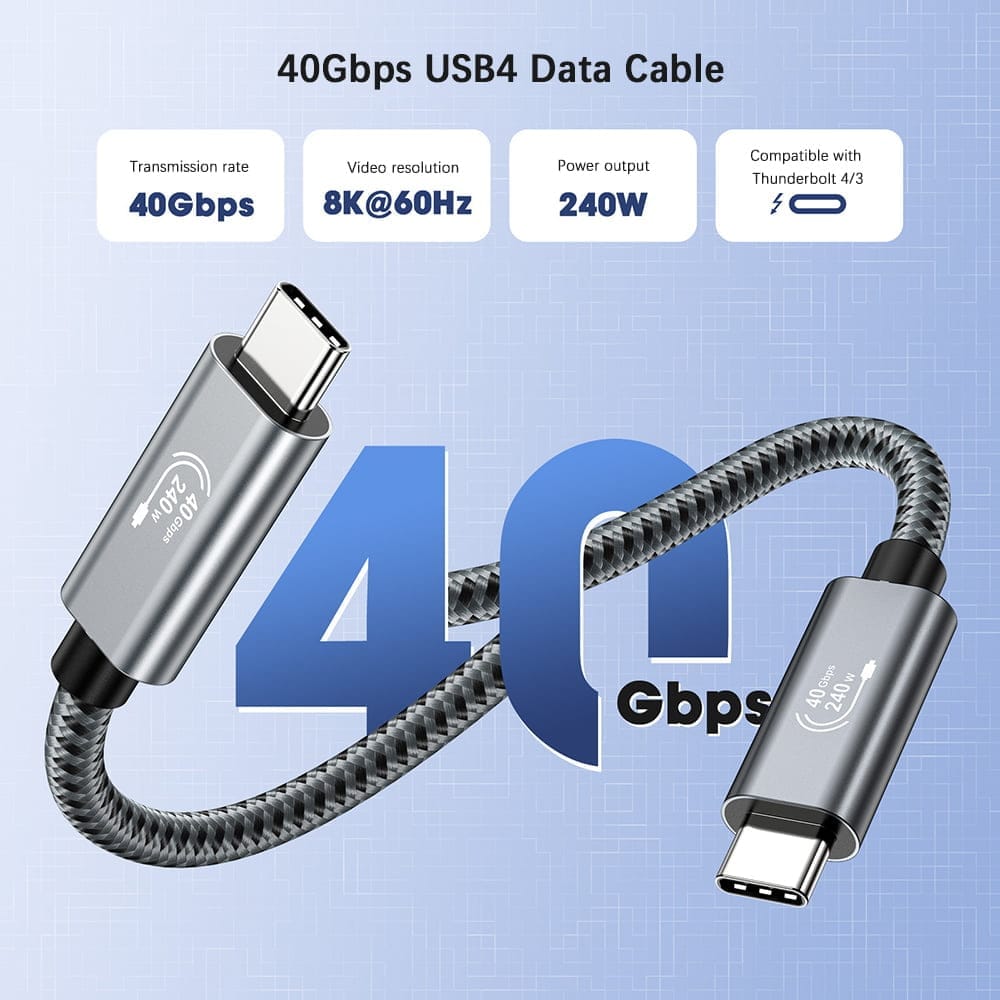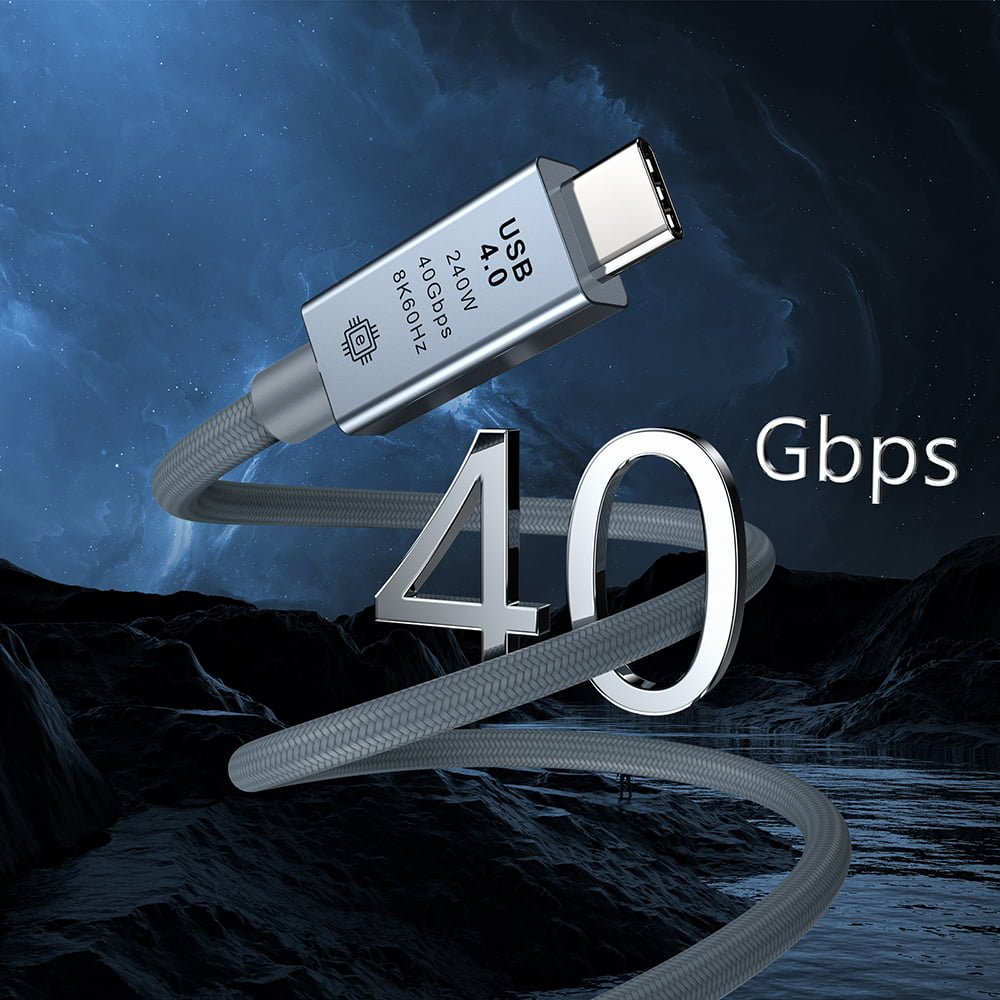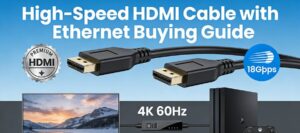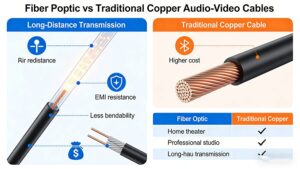USB4 vs Other USB Standards: A Comparison
In the fast-paced world of tech, USB cables are the unsung heroes of connectivity. But not all USB standards are created equal. Enter USB4—the latest leap forward in speed, versatility, and power. How does it stack up against older USB standards like USB 3.2, USB 3.0, or even USB 2.0? Let’s dive into a detailed comparison with charts, tables, and visuals to help you decide which cable deserves a spot in your tech arsenal.
Evolution of USB Standards: A Quick Timeline
Before we compare, here’s a snapshot of how USB standards have evolved over the years:

USB4 vs Other USB Standards: The Key Differences
Let’s break down the specs side by side:
| Feature | USB4 | USB 3.2 | USB 3.1 | USB 2.0 |
|---|---|---|---|---|
| Max Speed | 40 Gbps | 20 Gbps | 10 Gbps | 480 Mbps |
| Power Delivery (Max) | 100W | 100W | 100W | 2.5W |
| Data + Display Support | Yes | Limited | Limited | No |
| Thunderbolt 3 Compatible | Yes | No | No | No |
| Backward Compatible | Yes (USB 3.2/2.0) | Yes | Yes | Yes |
USB4 dominates in speed, power, and versatility.
Why USB4 is a Game-Changer
1. Speed That Blows the Competition Away
USB4 doubles the max speed of USB 3.2, hitting 40 Gbps—enough to transfer a 4K movie in seconds or run dual 4K monitors effortlessly.
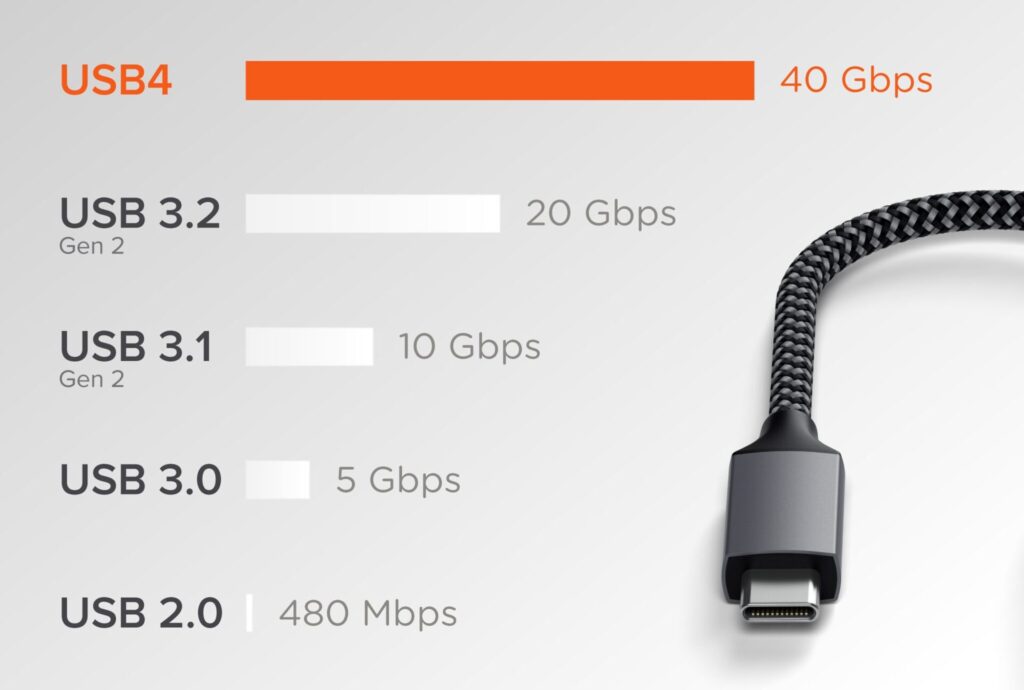
2. Thunderbolt 3 Integration
USB4 borrows Intel’s Thunderbolt 3 tech, letting you connect high-end peripherals like external GPUs, 8K displays, and ultra-fast SSDs. No more dongle chaos!
3. Smarter Bandwidth Management
Unlike older USB versions, USB4 dynamically allocates bandwidth between data, video, and power. Translation? No lag when multitasking.
4. Universal Compatibility
USB4 works with USB-C ports (no more flipping cables!) and is backward compatible with older devices—though at their native speeds.
Real-World Use Cases: Where USB4 Shines
- Creators: Edit 8K video on an external SSD while charging your laptop.
- Gamers: Stream flawlessly to a 4K monitor with zero latency.
- Professionals: Daisy-chain multiple Thunderbolt devices for a clutter-free desk.
The Downsides of Older USB Standards
- USB 3.2/3.1: Limited to 10–20 Gbps and no Thunderbolt support.
- USB 2.0: Painfully slow (480 Mbps) and outdated for modern tasks.
- USB-A Ports: Bulky, non-reversible, and fading into obsolescence.
Should You Upgrade to USB4?
Yes, if you:
- Use high-resolution displays or external GPUs.
- Transfer massive files daily (e.g., video editors, developers).
- Want a future-proof setup for next-gen devices.
Stick with older standards if you:
- Only charge phones or use basic peripherals.
- Own older devices without USB-C/Thunderbolt support.
The Verdict
USB4 isn’t just an upgrade—it’s a quantum leap in connectivity. With blistering speeds, Thunderbolt 3 compatibility, and unmatched versatility, it’s the gold standard for power users. While older USB cables still work for simple tasks, USB4 ensures you’re ready for tomorrow’s tech.
Upgrade Your Setup Today!
Explore our premium USB4 cables and hubs to unlock the full potential of your devices.
